Every great civilisation has contributed something special to the pantheon of world architecture. Egypt gave the world pyramids, Greece provided Corinthian columns, and India provided the stepwell, elevating the humble act of collecting water into an extravagant piece of public theatre.
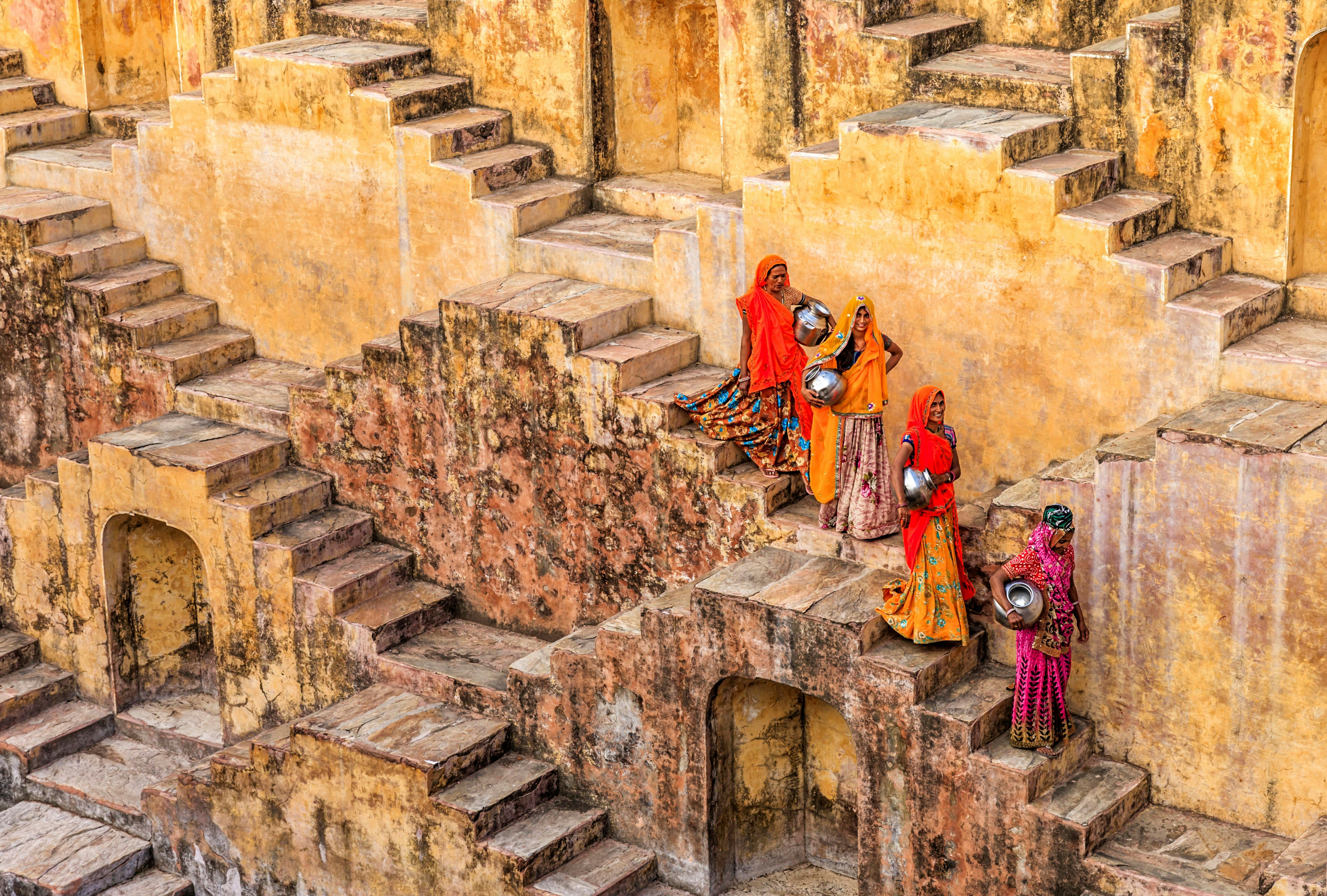
Known variously as baoris, baolis and vav, stepwells were designed to fill and empty with the changing seasons, allowing access to the water via a series of cascading terraces, no matter how high or low the water level. Reflecting the importance of water in monsoon-dependent India, most stepwells were lavishly ornamented and decked out with niches and pavilions where people could swim, bathe, perform religious rituals, and enjoy the natural cooling effect of a stored body of water.
Today, stepwells – whether abandoned or in use – can be found scattered across India, with the highest concentration in the north of the country, often far from the mainstream tourist trail. Here’s our pick of seven of the most spectacular, with details on how to visit them yourself.
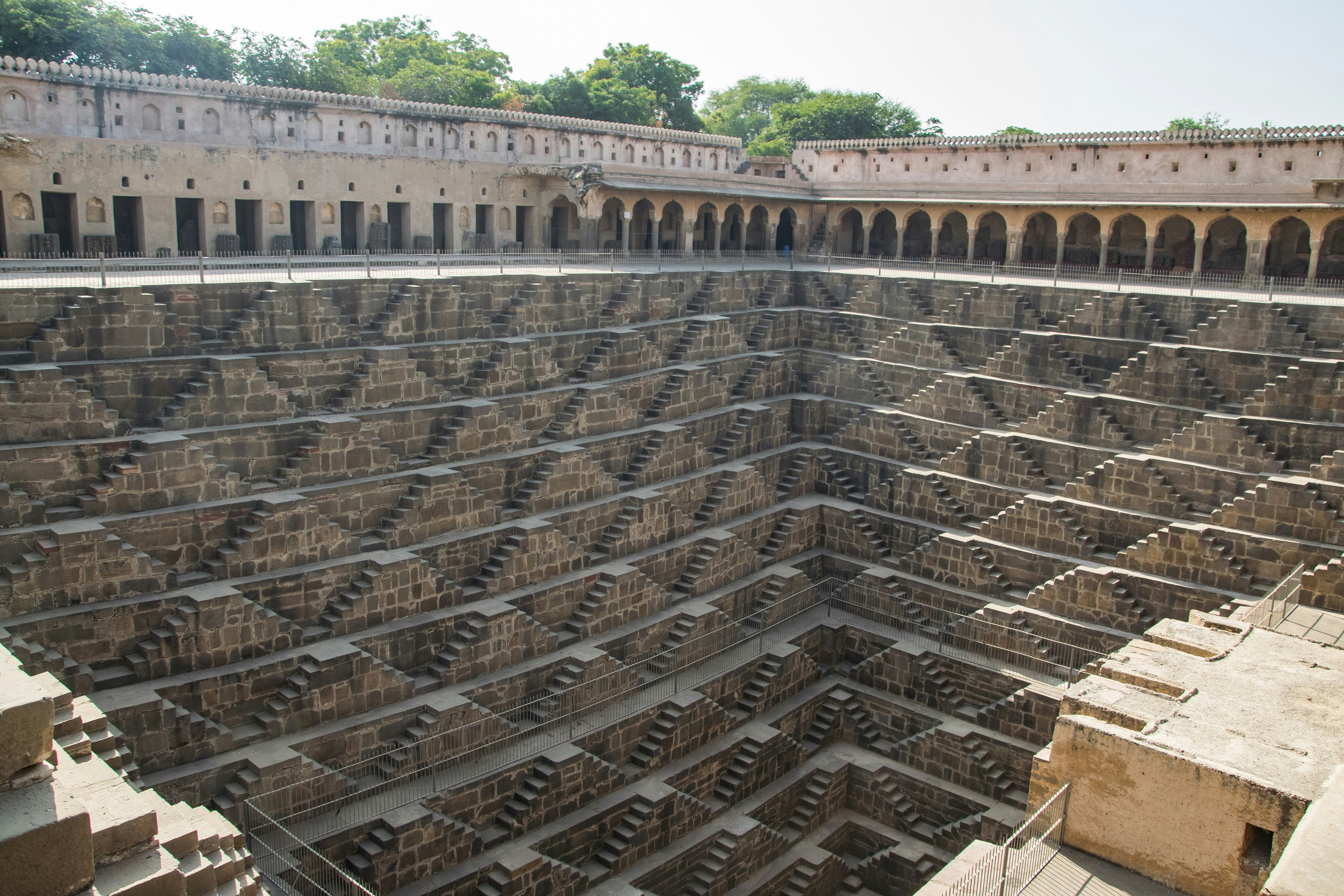
1. Chand Baori, Abhaneri, Rajasthan
Perhaps the most striking of all India’s stepwells, Chand Baori has featured as the setting for a string of Bollywood song and dance numbers. Some 3500 steps topple down the sides of the enormous central tank, arranged in an intricate criss-cross pattern that recalls the facets of a cut diamond – albeit one that’s 13-storeys deep and 35m across from side to side.
There’s a hint of M C Escher about the latticework of interlinked stairways, giving the baori a sense of impossible geometry. The lower tiers were constructed by the Hindu king Raja Chanda in the 9th century, but the Mughals embellished the upper levels with pavilions and arcades in the 18th century, making the monument look more Islamic than Hindu. If it looks a little familiar, the stepwell had a cameo in the 2012 Batman flick The Dark Knight Rises.
Getting there: Reaching Abhaneri by public transport involves a 95km bus, shared-taxi and minibus ride from Jaipur, with changes at Sikandra and Gular; it’s easier to charter a taxi in Jaipur for a day trip. For accommodation, Jaipur’s pocket-friendly Hotel Pearl Palace is a long-standing traveller favourite, while visitors with bottomless budgets favour the Taj Hotels-run Rambagh Palace – former pad of Maharaja Man Singh II.
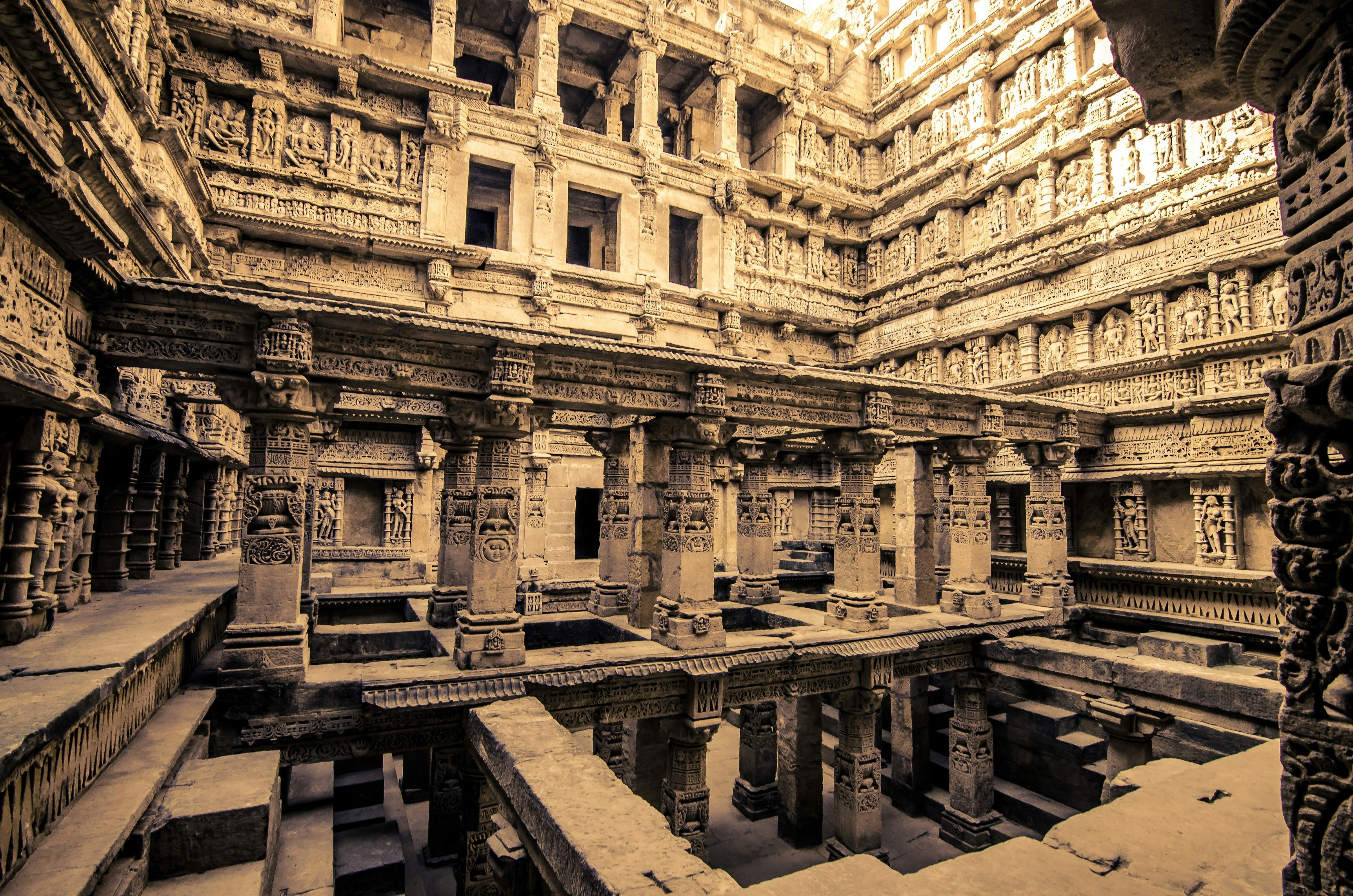
2. Rani-ki-Vav, Patan, Gujarat
The grand-daddy of Indian stepwells, Rani-ki-Vav is one of the few surviving relics from the once-powerful Chaulukya kingdom, which ruled large areas of Gujarat and Rajasthan in the 11th century. Dropping vertiginously into the ground in a series of carving-covered tiers, this monumental stepwell was constructed on the orders of Udayamati, wife of the Chaulukya king Bhimdev I.
The remarkable state of preservation of Rani-ki-Vav is actually the result of a natural disaster – the monument was filled with silt in the 13th century and only re-exposed in the 1940s. Today, the stepwell is Unesco-listed, both for its super-sized superstructure, and for the intricacy and elegance of the carvings of Vishnu and other deities that cover every spare inch of exposed stone.
Getting there: Patan is around 130km northwest of Ahmedabad, and makes for an easy three-hour trip by chartered taxi, or by bus from Ahmedabad’s ST Bus Station. The best place to stay in Patan is the inviting Apple Residency, with tidy, modern rooms and plasma TVs.
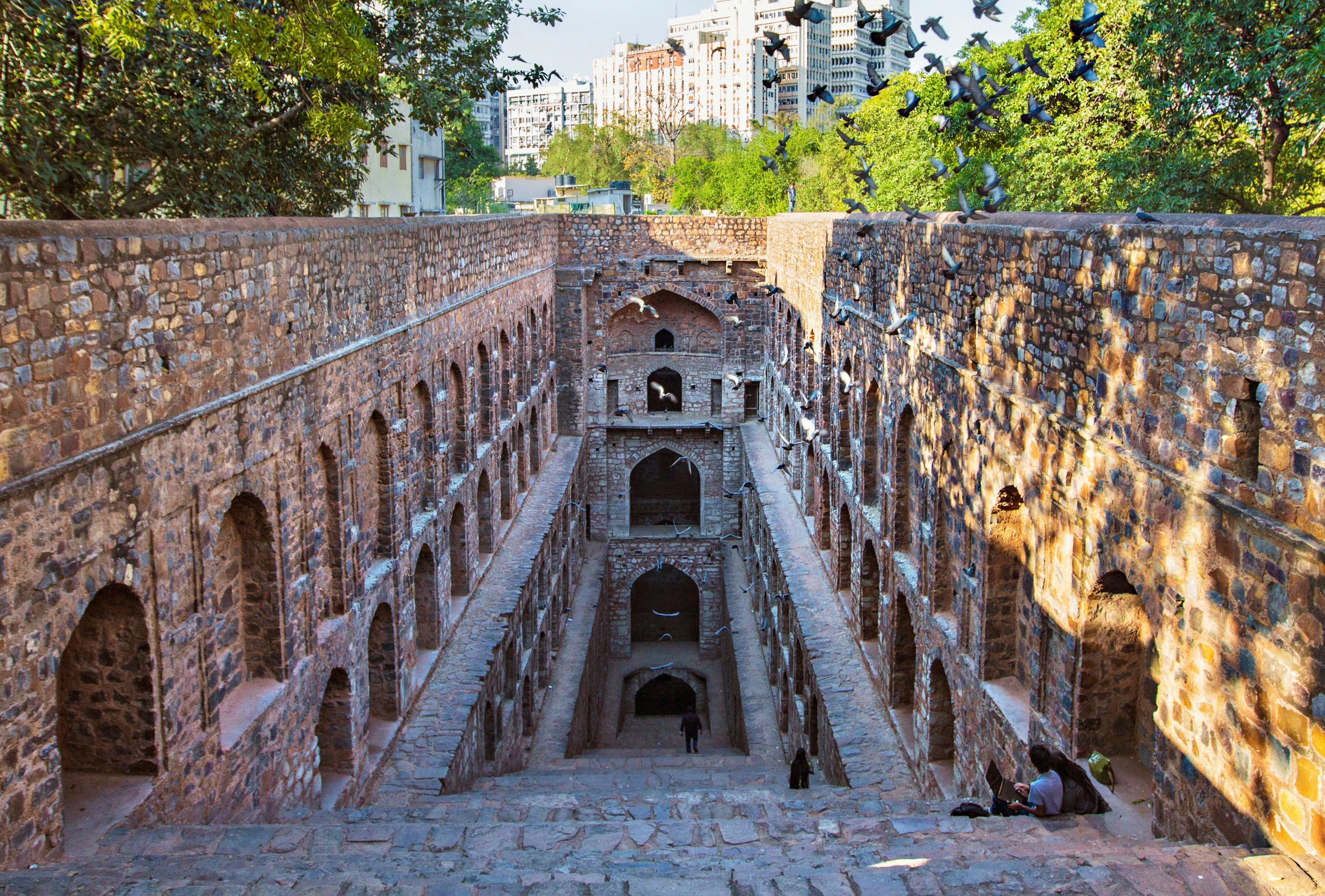
3. Agrasen Ki Baoli, Delhi
This oft-missed Delhi landmark opens up unexpectedly in the middle of a New Delhi street, just minutes from the mercantile chaos of Connaught Place. The stepwell cuts a 60m-long slice through the earth below the Indian capital, faced with niches set under Islamic arches, accessed via a single sweeping stairway. The structure seen today was most likely constructed during the Tughlaq period in the 14th century, when Delhi was ruled by a dynasty of Turkic sultans. It’s said to be haunted – usually by the same people who warn of jinns (Islamic spirits) stalking the ruins of Tughlaqabad and Feroz Shah Kotla. Today, the baoli is a favoured selfie spot thanks to a starring role in the 2015 Aamir Khan blockbuster PK.
Getting there: The baoli is right in the heart of New Delhi, opening up some of the capital’s most appealing accommodation. The pricey but charming Haveli Dharampura serves up Mughal elegance in the alleys of the old city, while Amax Inn keeps backpackers happy in the backlanes of Paharganj.
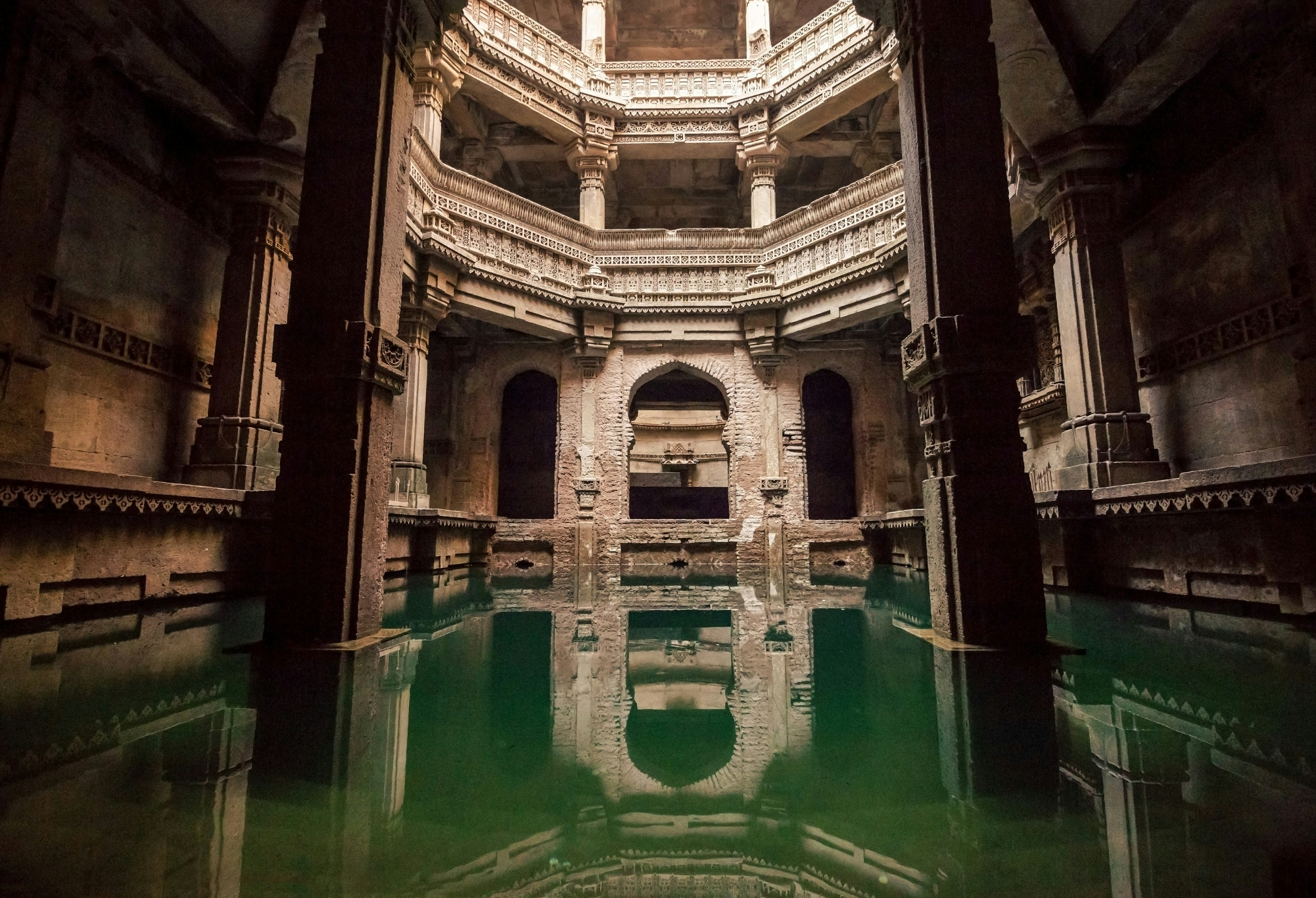
4. Adalaj Vav, Adalaj, Gujarat
While it can’t compete with the scale of Rani-ki-Vav, the 15th-century stepwell at Adalaj in central Gujarat is a masterpiece of the stonemason’s art – a jewel-box of column-propped arcades surrounding a central, octagonal well shaft, covered in a filigree tracery of carved flowers, elephants, deities and ornamental motifs.
Although the carvings swim with Hindu symbolism, the well was actually constructed by a Gujarati sultan, Mahmud Begada, over foundations excavated by a vanquished Hindu rival, reputedly to court the attentions of the defeated king’s widow. According to legend, the sultan was so pleased with the stepwell that he put the masons who built it to death to stop them duplicating their masterpiece.
Getting there: Adalaj is easily accessible from Ahmedabad by auto rickshaw or taxi via the road to Gandhinagar (journey time: 30 minutes). Ahmedabad is jammed with places to stay; Hotel Cadillac is a passable budget choice, but travellers with means choose House of MG, the former home of a millionaire textile magnate.
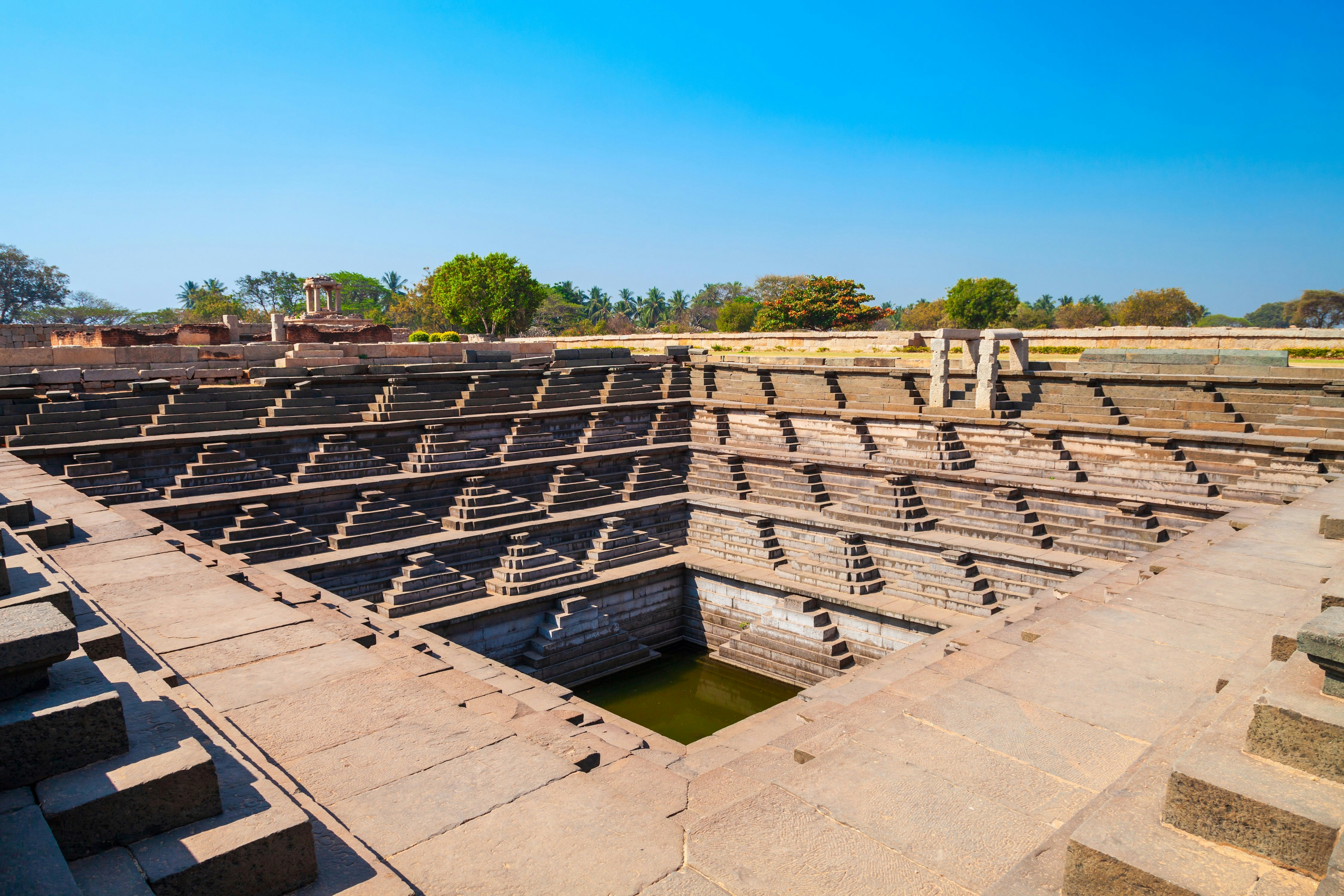
5. The Pushkarinis of Hampi, Karnataka
Stepwells are primarily a north Indian tradition, but the Vijayanagar ruins at Hampi are dotted with ceremonial tanks, or pushkarinis, that are built in the stepwell style. Within the royal enclosure, the so-called Stepped Tank is a classic Indian stepwell, long since stripped of its upper pavilions, but with its eye-catching cascade of pyramid-shaped stairways still intact. Along with nearby ruins such as the Elephant Stables and Queen’s Bath, it gives a powerful sense of the ceremony-filled lifestyles of Hampi’s ancient rulers.
Getting there: Hampi is easily accessible via the train station at Hosapete (Hospet), a short bus ride from Hampi Bazaar, the traveller centre at the heart of the ruins. Accommodation at Hampi Bazaar is periodically threatened with closure by the authorities – at the time of writing, Manash Guesthouse and Sunny Guesthouse were appealing options.
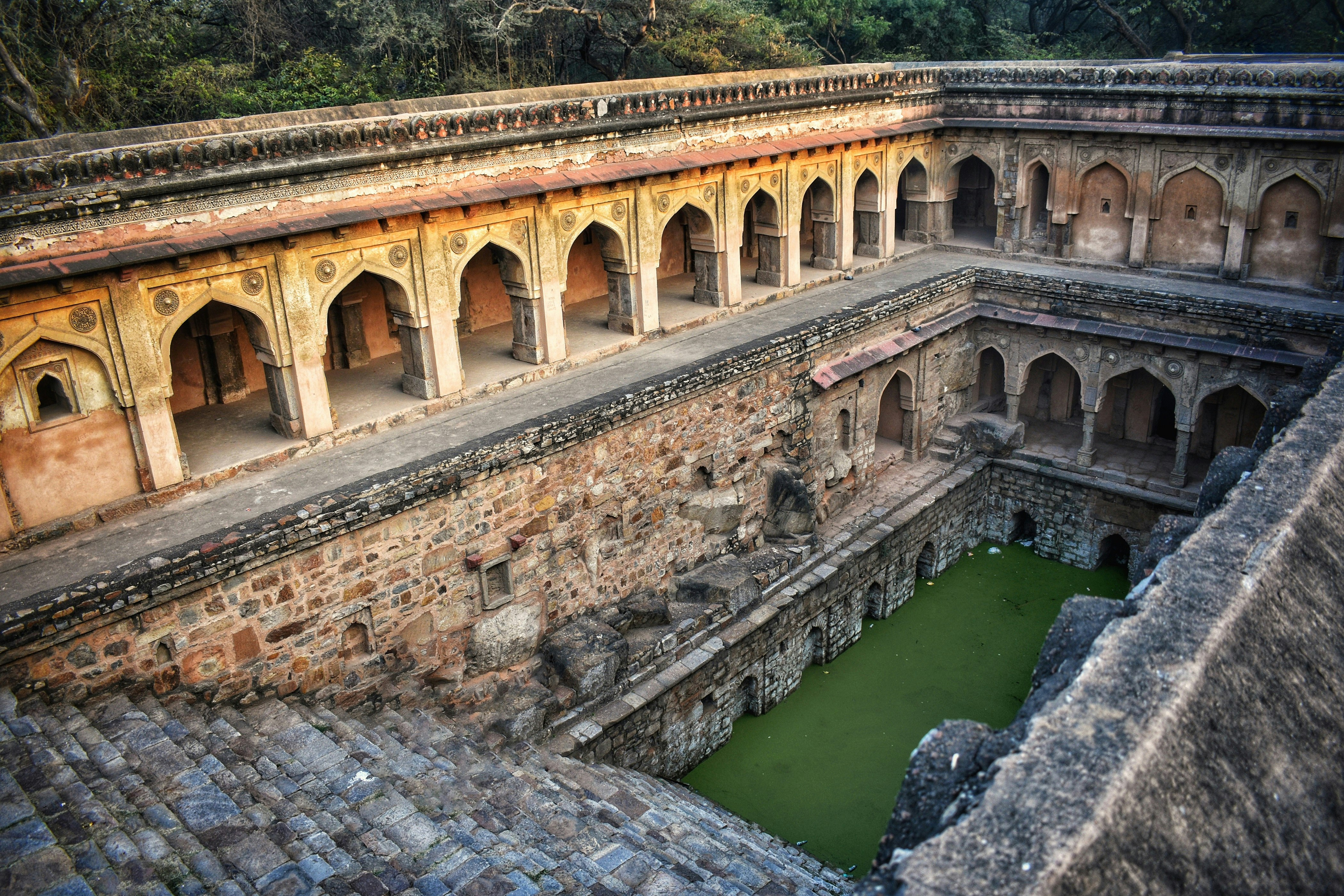
6. Rajon Ki Baoli, Delhi
Delhi’s second entry in the stepwell chart, this atmospheric waterhole drops silently in the dry, dusty forests of the Mehrauli Archaeological Zone, overlooked by most of the tour groups who flock to the nearby Qutab Minar. The location is eerily quiet – it’s easy to see why legends of spooks and spectres have grown up around this secluded site, which overflows with ruined mosques, tombs and pavilions.
Architecturally, the stepwell is unmistakably Islamic, with stepped tiers of arches decorated with stucco motifs, and niches for lanterns hinting at ceremonial activities after dark. The well was commissioned by Daulat Khan, a prominent official in the government of Delhi’s Lodi Dynasty, in the early years of the 16th century. While the well’s name implies a link to Indian royalty (‘Raja’ is another term for king), it is actually named for the rajmistris (masons) who built it.
Getting there: You can commute to Mehrauli from almost anywhere in Delhi on the Metro. Madpackers Hostel near Hauz Khas is a great place to meet fellow budget travellers, but for true class (and amazing food), The Manor at Friends Colony (West) is one of Delhi’s finest addresses.
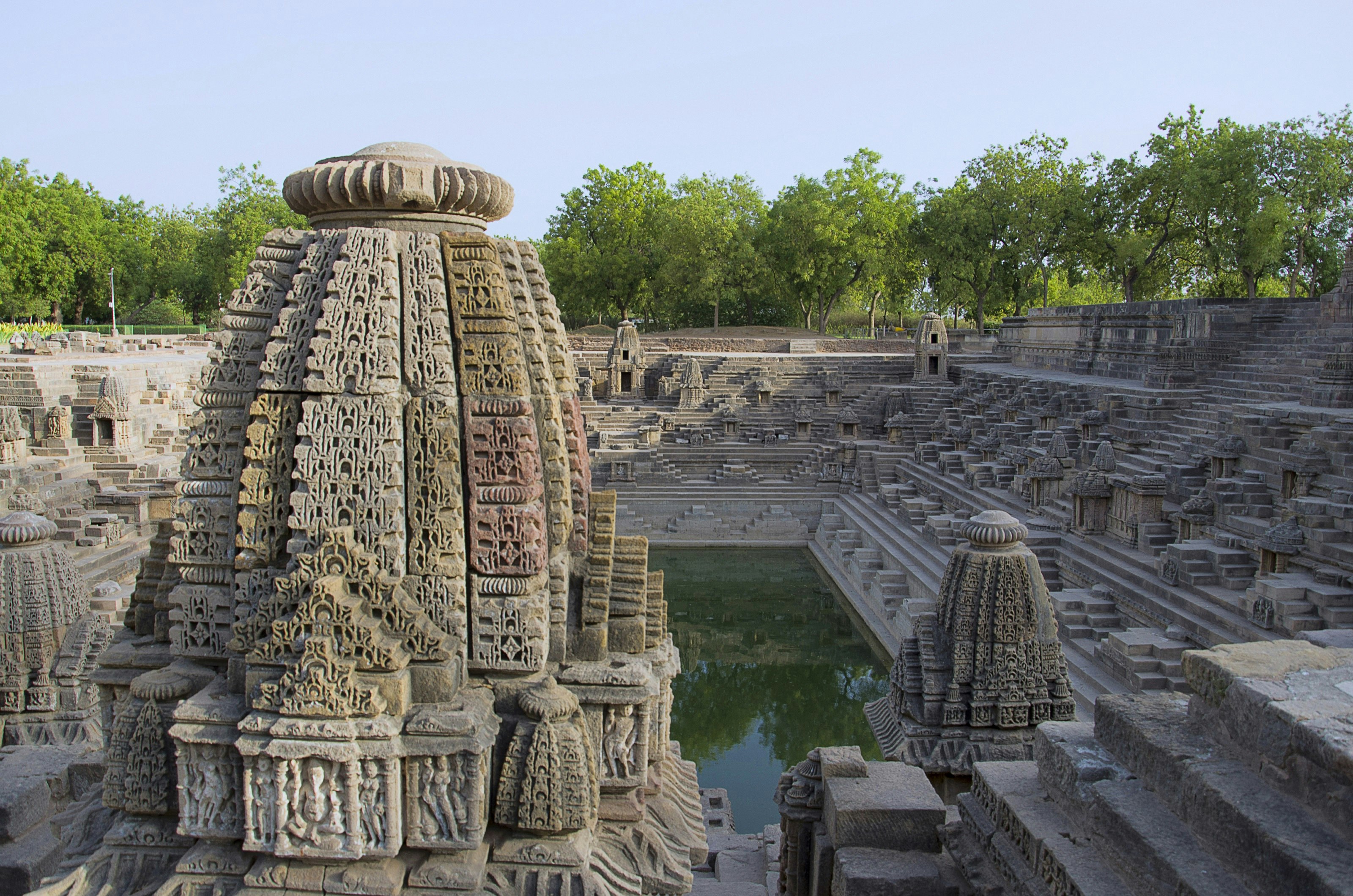
7. Surya Kund Stepwell, Modhera, Gujarat
An easy day trip from Ahmedabad, the handsome 11th-century Sun Temple at Modhera was built so that the dawn sun would shine into the inner sanctum during the equinox – a homage to the rulers of the Solanki dynasty, who claimed to be descended from the sun. The temple pavilion backs onto the Surya Kund, a huge stepwell studded with more than 100 small shikharas (spired temples) and shrines, like a sunken art gallery of carved stone. The whole complex was the brainchild of king Bhimdev I, whose wife was responsible for the enormous Rani-ki-Vav at Patan.
Getting there: Modhera is accessible by bus from Ahmedabad, with a change in Mahesana, but it’s easier to organise a car and driver in Ahmedabad and visit both Modhera and Rani-ki-Vav on the same trip.

